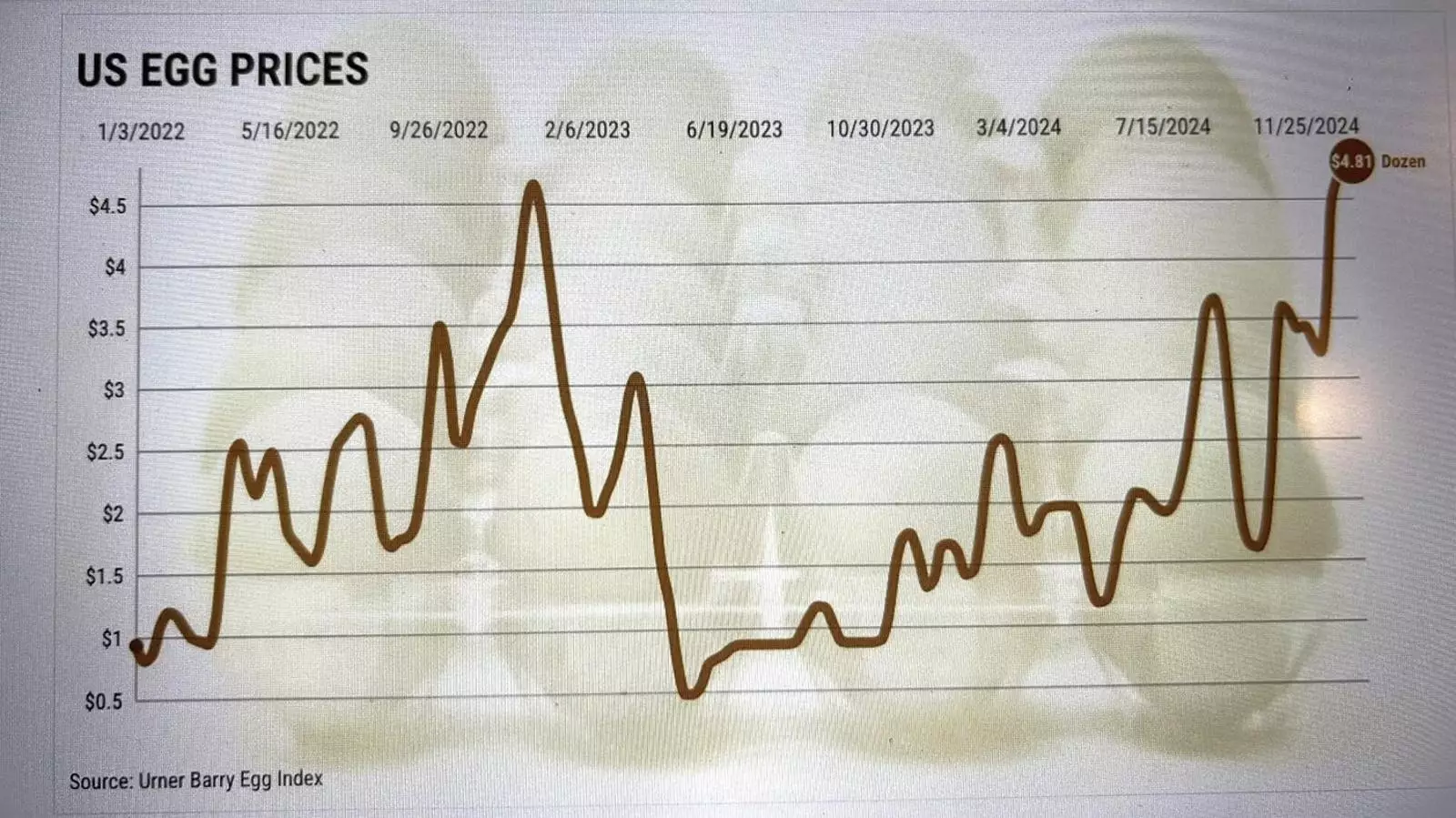In recent months, the price of eggs has sparked significant concern among consumers, with Garde A large eggs now averaging $4.15 per dozen. This represents a staggering 36.8% increase compared to last year’s price of $2.52. As consumers voice their frustrations, it becomes essential to dissect the underlying factors that contribute to this surge in prices. While the focus is often solely on egg pricing, the realities of poultry production and broader agricultural economics reveal a more complex picture.
Central to understanding egg prices is the fact that chickens are not merely a secondary factor; they are foundational to egg production. The classic chicken-or-egg dilemma frequently overshadows discussions about the actual economic dynamics at play. It is crucial to recognize that a chicken’s lifecycle significantly influences its ability to produce eggs. An optimal laying hen typically takes at least four and a half months to mature before she starts contributing to egg supply. This maturation period complicates supply chain management and creates lag times that exacerbate the challenges of meeting fluctuating consumer demand.
When demand surpasses supply, as has recently been the case with eggs, prices can rise sharply. The agricultural market operates on a delicate balance, and when a sudden spike in consumer interest arises, producers often find themselves scrambling to keep pace. Delays in egg production due to the time it takes for hens to mature can lead to significant price hikes as businesses attempt to manage the demand-supply gap. However, this process can be further complicated by external factors that disrupt the equilibrium, such as disease outbreaks or environmental conditions.
Several distinct variables have converged to exacerbate the ongoing pricing crisis for eggs. Not only has consumer behavior shifted toward higher poultry consumption, leading to increased demand, but climate change has also introduced unpredictable challenges. Clean water and sufficient grain for feed, essential for raising hens, have become harder to come by, affecting production rates. The most critical factor, however, has been the resurgence of the avian flu (H5N1), which has decimated poultry populations. In 2022 alone, over 147.25 million birds were lost due to this outbreak across the United States, accounting for approximately 39% of the total egg-laying hen population.
The impact of avian flu is profound and continues to shape the egg market. With an estimated 379 million egg-laying hens present in the U.S. in 2024, the loss of such a significant portion of this population will have long-lasting ramifications on overall production capacity. Hens typically lay around 300 eggs per year, which means that a considerable gap in supply will persist until flocks build back up. As we approach seasonal peaks, like Easter, the forecast for egg prices remains grim, with projections indicating an increase of over 20% this year – significantly higher than the overall food inflation rate of 2.2%.
The challenges of modern agriculture extend beyond disease outbreaks. The U.S. faced a staggering number of climate-related disasters, totaling at least 73 events costing over one billion dollars each between 2022 and 2024. These disasters create substantial hurdles for farmers, making it increasingly difficult to maintain healthy poultry under stress. When combined with rising feed costs and supply chain disruptions, the result is an agricultural system that struggles to adapt to shifting consumer demands while contending with unpredictable external forces.
The price of eggs is influenced by a multitude of interconnected factors, not solely a matter of direct supply and demand. As consumers prepare for increases in egg prices and the growing pressure of food inflation, it becomes essential to stay informed and adapt purchasing habits accordingly. The complexities of food production mean that immediate solutions to these economic pressures will not materialize overnight. Understanding the intricate web of agricultural dynamics can help consumers navigate this challenging landscape. As we brace ourselves for an uncertain future regarding egg pricing, it’s evident that the conversation around food economics is far from over.


Leave a Reply